WELLS – On a chilly weekday morning on a boardwalk in a preserve, the essence of education played out as first- and second-graders learned about kestrels, turtles, bats and porcupines.
As a boy chatted about echolocation and the kind of shelter bats need, he settled down, kneeling on the cold ground to write in a notebook.
It was hard to imagine him fidgety in a classroom, although his teacher says that often he is.
“Nature is his learning method. This is where he needs to be. In a classroom is not his ideal learning (environment). Here, he is creative, and that creativity is the highest level of thinking that he can do, that anyone can do,” said Wells Elementary School teacher Mary Beth Clason.
The lesson on bats was taking place in a field at the Wells National Estuarine Research Reserve as part of a pilot program that is turning grade school students into little biologists.
“Wild Friends in Wild Places” is a joint venture between the Wells reserve and the Center for Wildlife in York, which rescues wildlife and introduces the public to the animals that can’t be released because they are disabled or otherwise unable to survive..
Outdoor lessons are not new at Wells Elementary School. However, this new program will take lessons about nature a step further this spring when the students return to their school to create a wildlife habitat.
“We’ll work on the vernal pools. We’re fortunate to have them at the school,” Clason said.
First the folks at the reserve and the Center for Wildlife will introduce students to Maine’s wild critters.
Using owls, bats and falcons that are not able to return to the wild, the nonprofit center’s staff will familiarize students with wild animals in a personal way.
Then the Wells reserve staff will take them to where the animals live.
“We have an albino porcupine on the property that we see,” said Paige Rutherford, interpretive education associate at the reserve, as she walked along a trail with students.
Looking for wildlife in the 2,250-acre preserve, knowing where the resident critters can be found, and creating trails and boardwalks to those habitats is part of what the reserve staff does. They also work to improve wildlife habitat.
Students will find and explore this critical habitat at the reserve and learn to identify it elsewhere.
“From Route 9 in Wells to North Berwick at sunset is a field day for bats looking for mosquitoes,” Rutherford told the class during a hike.
The pilot program will be offered this spring to area schools through a grant from contributing outdoor groups, but the free offering requires the classes to work on habitats at their schools.
The program will introduce three elementary schools and a total of 360 students to the work of being a biologist.
“We kind of recognized how you can’t have stewards who grow up and care about the environment if they’re not witnessing it first-hand,” said Kristen Lamb at the wildlife center, one of the program’s founders.
“We offer programs and notice kids raise their hands and answer questions about habitat, but they’re citing (TV shows). This is geared to get them to understand that when they’re in the woods, they’re not looking at a bunch of trees, they’re looking at a bunch of homes.”
As Rutherford took Clason’s class into a large field last month, holding their attention was not hard.
Many dressed in snowsuits, the young ecologists spread out on the cold field. They lay on their stomachs to explain in workbooks how a kestrel would use the field.
“So they can catch mice, or hunt for crickets,” some offered aloud.
Clason has taught elementary education in Wells for 25 years. She’s seen the remarkable way nature stops students, draws them out and creates a sense of decorum and wonder.
“Not a single kid doesn’t benefit from being in nature,” Clason said.
Staff Writer Deirdre Fleming can be contacted at 791-6452 or at:
dfleming@pressherald.com
Send questions/comments to the editors.


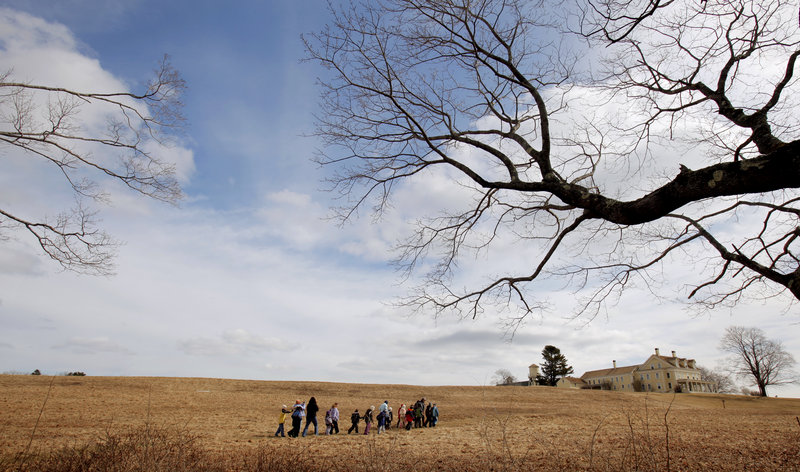
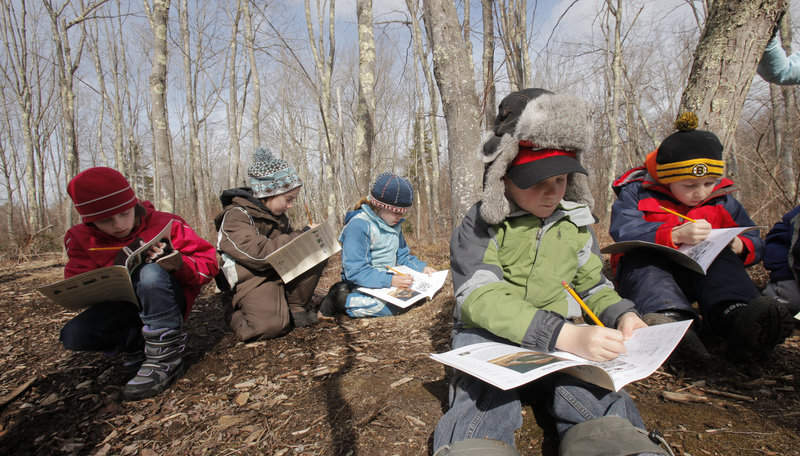
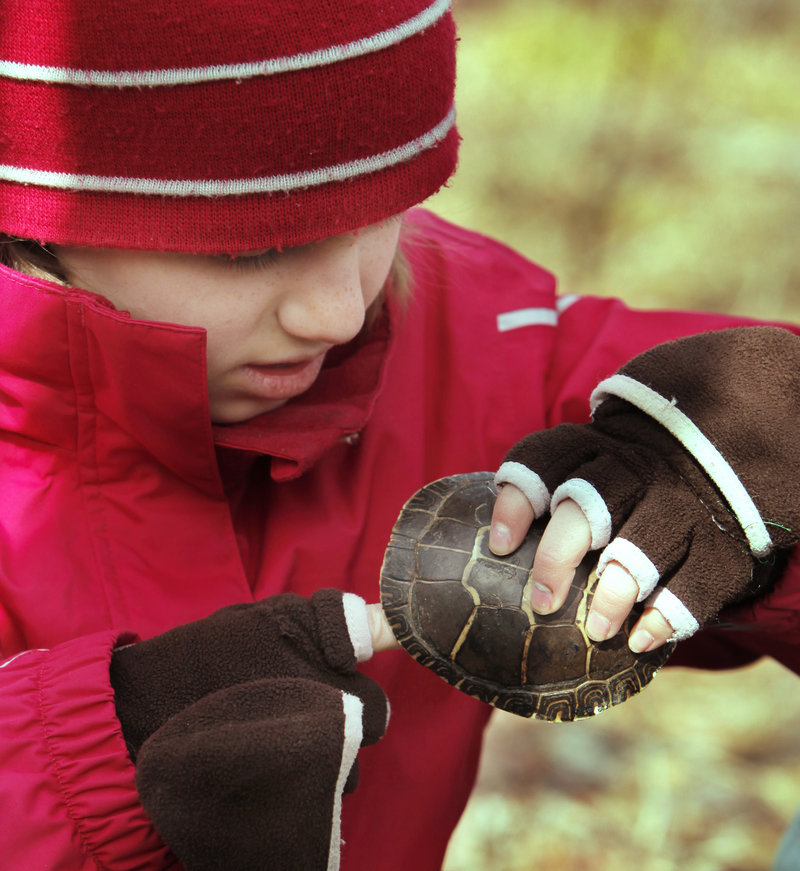
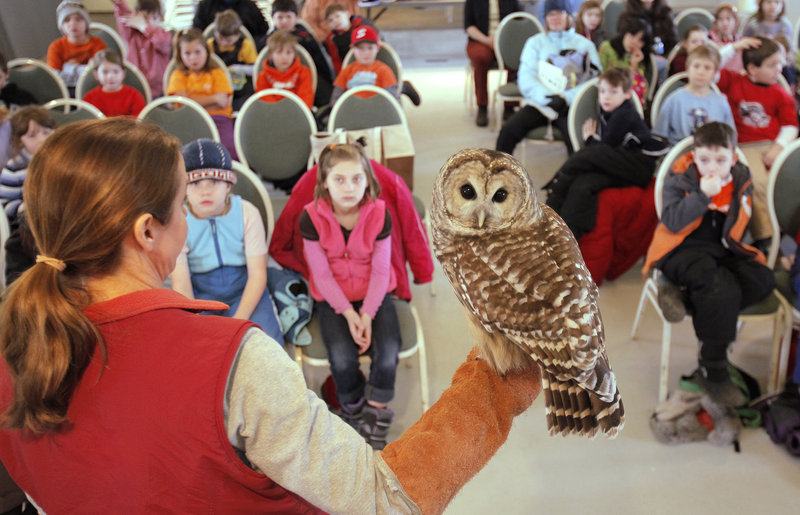
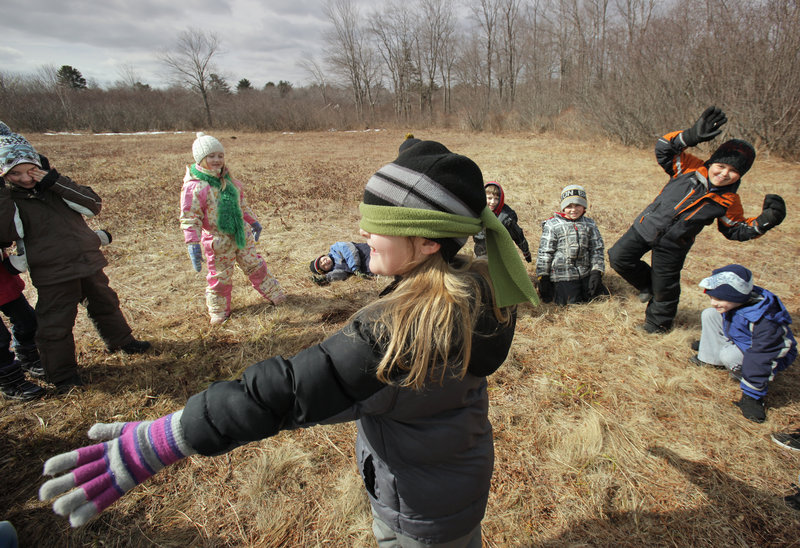

Success. Please wait for the page to reload. If the page does not reload within 5 seconds, please refresh the page.
Enter your email and password to access comments.
Hi, to comment on stories you must . This profile is in addition to your subscription and website login.
Already have a commenting profile? .
Invalid username/password.
Please check your email to confirm and complete your registration.
Only subscribers are eligible to post comments. Please subscribe or login first for digital access. Here’s why.
Use the form below to reset your password. When you've submitted your account email, we will send an email with a reset code.